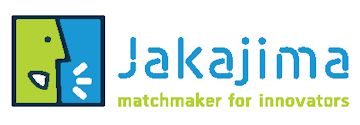Dries van Wageningen, Xavier Chatel, Marcos Martinez Vázquez, Antonio Salas Moreno
Signify, High Tech Campus 7, Eindhoven, 5656AE, Netherlands
Maxlinear, Ronda Narcis Monturiol 11D, Valencia, 46980, Spain
dries.van.wageningen@signify.com
Topic Medium range: Indoor IR and visible light communications (VLC) for wireless local area networks (WLANs) and inter-vehicular and vehicle-to-infrastructure communications.
Abstract
Optical wireless communication (OWC) could be the answer to meet the increasing demand for wireless connectivity in response to crowded RF networks. OWC suffers less from interference than RF because light does not penetrate through walls and allows for smaller “cells” compared to RF due to better beamforming. Therefore, optical wireless communication enables a much denser reuse of the transmission medium compared to RF.
To realize full optical coverage within a certain area, optical cells need to overlap. That means, like for RF, that interferences may occur between nodes that belong to different cells. Unlike in RF, LiFi nodes dominantly communicate via line-of-sight. This property causes an extra hurdle to handle interference, because nodes do not detect the transmission of neighbouring nodes and may cause unintended interference.
The conference focuses on leading edge research on Optical Wireless Communication in its different forms and gathers experts from academia and industry to show their latest technical results and showcase their products and services. The application scope is broad and it ranges from Ultra-short range to Ultra-long range.
Conference topics cover visible light communication, infrared optical and ultraviolet communication. These different forms of OWC can potentially be employed in a diverse range of communication applications ranging from optical interconnects within integrated circuits through outdoor inter-building links to free-space satellite communications.
The following topics are being covered during the conference:
- Ultra-short range: for instance chip-to-chip communications in stacked and closely packed multi-chip packages
- Short range: For instance wireless personal area network (WPAN) applications under standard IEEE 802.15.7 and underwater communications.
- Medium range: indoor IR and visible light communications (VLC) for wireless local area networks (WLANs) and inter-vehicular and vehicle-to-infrastructure communications.
- Long range: inter-building connections, also called free-space optical communications (FSO).
- Ultra-long range: Laser communication in space especially for inter-satellite links and establishment of satellite constellations
This paper was presented during the conference which took place during the Photonics Applications Week.

Pingback: In this overview you find the invited papers and the accepted papers